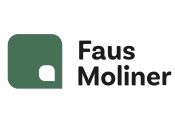The medical devices frontier
Guidance from the European Commission's Medical Devices Coordination Group (MDCG) on the borderline between medical devices and medicinal products
Capsulas Nº 227
The European Commission has released a new guide to delineate the concept of a medical device, which is essential in order to correctly classify a product and apply the appropriate legal regime to it. The boundary between medicinal product and medical device is sometimes complex.
A medical device is defined as: any instrument, device, equipment, software, implant, reagent, material or other article intended by the manufacturer to be used for a specific set of medical purposes (listed in the guidelines)and which exerts its principal action by mechanisms other than pharmacological, immunological or metabolic.
The guidance elaborates on the meaning of all these elements by defining:
- specific medical purpose: it is identified by the manufacturer among those listed by the applicable rules;
- principal mode of action: it is described by the manufacturer (labelling and claims);
- pharmacological means: interaction typically at a molecular level between a substance or its metabolites and a constituent of the human body which results in initiation, enhancement, reduction or blockade of physiological functions or pathological processes.;
- immunological means: action initiated by a substance or its metabolites in the human body and mediated by cells or molecules involved in the immune system;
- metabolic means: action of a substance or its metabolites involving an alteration, including stopping, starting or changing the rate, extent or nature of a biochemical process (physiological or pharmacological), participating in, and available for, function of the human body;
- medical diagnosis: the process of investigating the anatomy, morphology, condition or functions of the human body and then interpreting the information to determine abnormalities.
The Guidance incorporates a flowchart for determining if a product fulfils the definition of a medical device. According to the Commission, three questions must be asked: (i) is the product intended to be used for one of the listed medical purposes; (ii) if so, is it used or administered to make a medical diagnosis? If yes, then it is a medicinal product, otherwise the third question; (iii) is its principal action exerted by pharmacological, metabolic or immunological means? If yes, then it is a medical device.
Finally, certain more complex classes of products are analysed, providing rules and examples to determine their status: (i) herbal products, (ii) substance-based medical devices (products based on substances used in vitro in contact with human cells, tissues, organs or embryos or; products based on substances intended to be introduced into the human body or applied to the skin) and; (iii) medical device and medicinal product combinations (integral combinations of medical devices and medicinal products; medical devices to administer medicinal products and; products comprising a medicinal product with an ancillary function).
